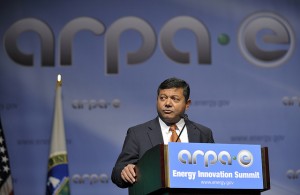Lawrence Berkeley National Laboratory (Berkeley Lab) researchers will play major roles in three new cutting-edge energy research projects being funded by the U.S. Department of Energy (DOE)’s Advanced Research Projects Agency-Energy (ARPA-E) that are aimed at “dramatically improving U.S. production and use of energy.” These three projects entail the development of tobacco as a source of biofuels, creation of a personalized system for reducing customer demands for electrical power when the grid is congested, and development of a commercial process for extracting biofuels from the resin of pine trees.
On September 29, ARPA-E director Arun Majumdar announced 60 new projects to be funded at an approximate total of $156 million.
“These innovative projects are at the forefront of a new technological frontier that plays a critical role in our future energy security and economic growth,” Majumdar said. “It is now more important than ever to invest in game-changing ideas that will build the technological infrastructure for a new, clean energy economy.”
Said Berkeley Lab director Paul Alivisatos, “Berkeley Lab is proud to be involved in these three ARPA-E projects, all of which have the potential to create economic growth and jobs, and a sustainable energy future.”
Christer Jansson, a biochemist with Berkeley Lab’s Earth Sciences Division, heads a group that will receive about $4.9 million to engineer tobacco plants to produce molecules in their leaves that can be used as high-density liquid transportation fuels. The goals are to introduce genetic traits, some from cyanobacteria and green algae, that will confer hydrocarbon biosynthesis, enhance carbon uptake and optimize the plant’s utilization of sunlight. Advanced cultivation techniques will also be deployed to maximize biomass.
 Mary Ann Piette, a mechanical engineer with Berkeley Lab’s Environmental Energy Technologies Division (EETD) who directs research at the Demand Response Research Center, is the co-principal investigator, along with David Watson, also of EETD, on a partnership with AutoGrid, Inc., a company that provides software analytics for the Smart Grid, and Columbia University. This partnership is to receive about $3.5 million to design and demonstrate a highly distributed Demand Response Optimization and Management System for Real-Time (DROMSRT). The goal is to enable “personalized” price signals to be sent to millions of electrical power customers in extremely short timeframes, enabling those customers to reduce their demand when the grid is congested. DROMS-RT is expected to provide a 90 percent reduction in the cost of operating demand response programs in the United States.
Mary Ann Piette, a mechanical engineer with Berkeley Lab’s Environmental Energy Technologies Division (EETD) who directs research at the Demand Response Research Center, is the co-principal investigator, along with David Watson, also of EETD, on a partnership with AutoGrid, Inc., a company that provides software analytics for the Smart Grid, and Columbia University. This partnership is to receive about $3.5 million to design and demonstrate a highly distributed Demand Response Optimization and Management System for Real-Time (DROMSRT). The goal is to enable “personalized” price signals to be sent to millions of electrical power customers in extremely short timeframes, enabling those customers to reduce their demand when the grid is congested. DROMS-RT is expected to provide a 90 percent reduction in the cost of operating demand response programs in the United States.
Jay Keasling and Blake Simmons are the co-principal investigators on behalf of the Joint BioEnergy Institute (JBEI), which is working in partnership with researchers at the University of Florida on a project that is to receive nearly $6.4 million for developing the commercial production of terpene biofuels in pine trees. Terpenes are a large class of chemical compounds produced in plants, especially conifers, that have promising potential as biofuels. In this project, a pine tree will be engineered to increase production of turpentine, a natural liquid biofuel, by about six-fold. The tree will also be engineered to increase the turpentine storage capacity of its wood. The goal is produce 100 million gallons of sustainable domestic biofuel fuel per year from less than 25,000 acres of forestland. JBEI is one of three DOE Bioenergy Research Centers and a multi-institutional partnership led by Berkeley Lab.
# # #
Lawrence Berkeley National Laboratory addresses the world’s most urgent scientific challenges by advancing sustainable energy, protecting human health, creating new materials, and revealing the origin and fate of the universe. Founded in 1931, Berkeley Lab’s scientific expertise has been recognized with 12 Nobel prizes. The University of California manages Berkeley Lab for the U.S. Department of Energy’s Office of Science. For more, visit www.lbl.gov.
